For the following rational function, identify the coordinates of all removable discontinuities and sketch the graph. Identify all intercepts and find the equations of all asymptotes.f(x) = 
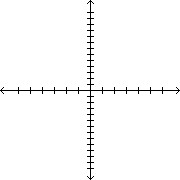
A. removable discontinuity at (2, -4);
x-intercept:  , y-intercept: (0, 2);
, y-intercept: (0, 2);
no asymptotes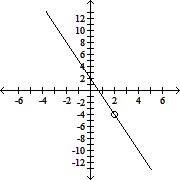
B. removable discontinuity at (2, 4);
x-intercept: (-2, 0), y-intercept: (0, 2);
no asymptotes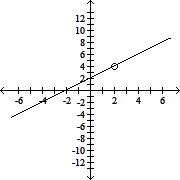
C. removable discontinuity at (2, 0);
x-intercept: (2, 0), y-intercept: (0, 2);
no asymptotes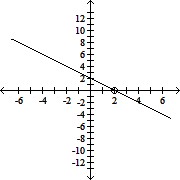
D. removable discontinuity at (2, 8);
x-intercept:  , y-intercept: (0, 2);
, y-intercept: (0, 2);
no asymptotes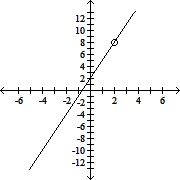
Answer: D
You might also like to view...
Find all specified roots.Seventh roots of 1.
A. 1, cis  , cis
, cis  , cis
, cis  , cis
, cis  , cis
, cis  , cis
, cis 
B. -1, cis  , cis
, cis  , cis
, cis  , cis
, cis  , cis
, cis  , cis
, cis 
C. 1, cis  , cis
, cis  , cis
, cis  , cis
, cis  , cis
, cis  , cis
, cis 
D. 1, cis  , cis
, cis  , cis
, cis  , cis
, cis  , cis
, cis  , cis
, cis  , -1
, -1
Form an equivalent expression by rationalizing the denominator.
A. 
B. 130
C. 
D. 9
Solve the problem.A company adopts an advertising campaign to weekly add to its customer base. It assumes that as an average fifty percent of its new customers, those added the previous week, will bring in one friend, but those who have been customers longer will not be very effective as recruiters and can be discounted. A media campaign brings in 10,000 customers initially. What is the expected total number of customers with whom the company can expect to have dealings?
A. 20,000 customers B. The sum diverges to infinity. C. 15,000 customers D. 30,000 customers
Find the cubic or quartic function that models the data in the table. (Cubic)
(Cubic)
A. y = -1.53x3 + 0.54x2 - 2.07x + 0.36 B. y = -1.53x3 + 0.24x2 - 2.57x + 0.36 C. y = -1.53x3 + 0.24x2 - 2.07x + 0.36 D. y = -1.83x3 + 0.24x2 - 2.07x + 0.36